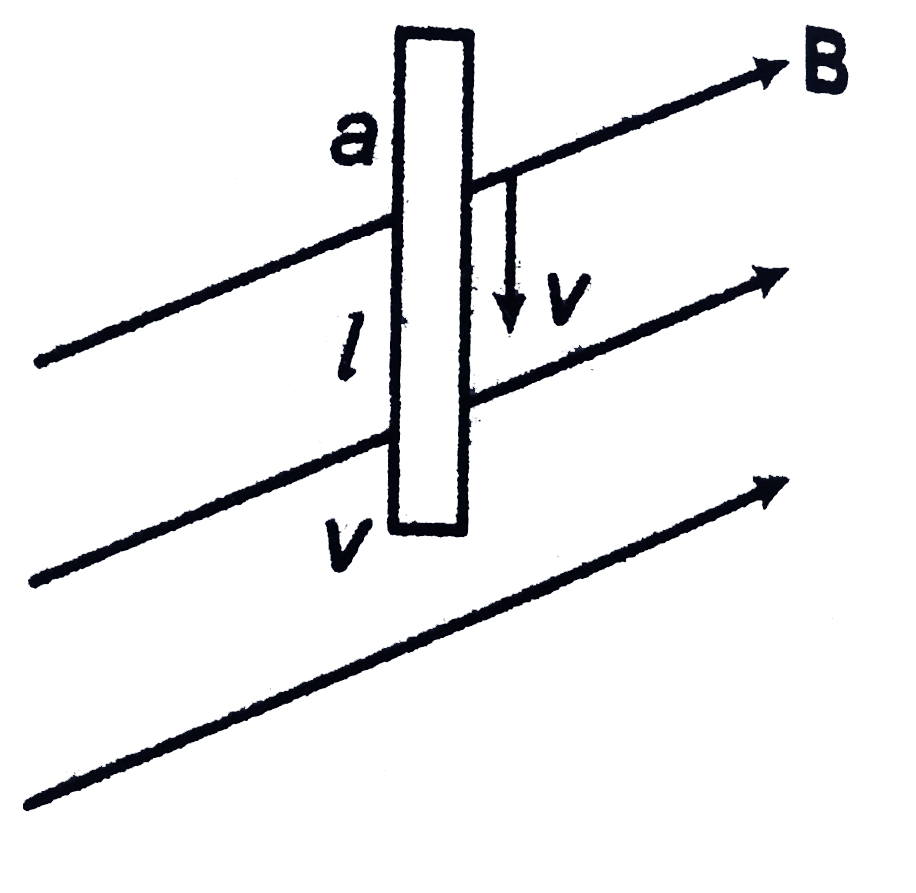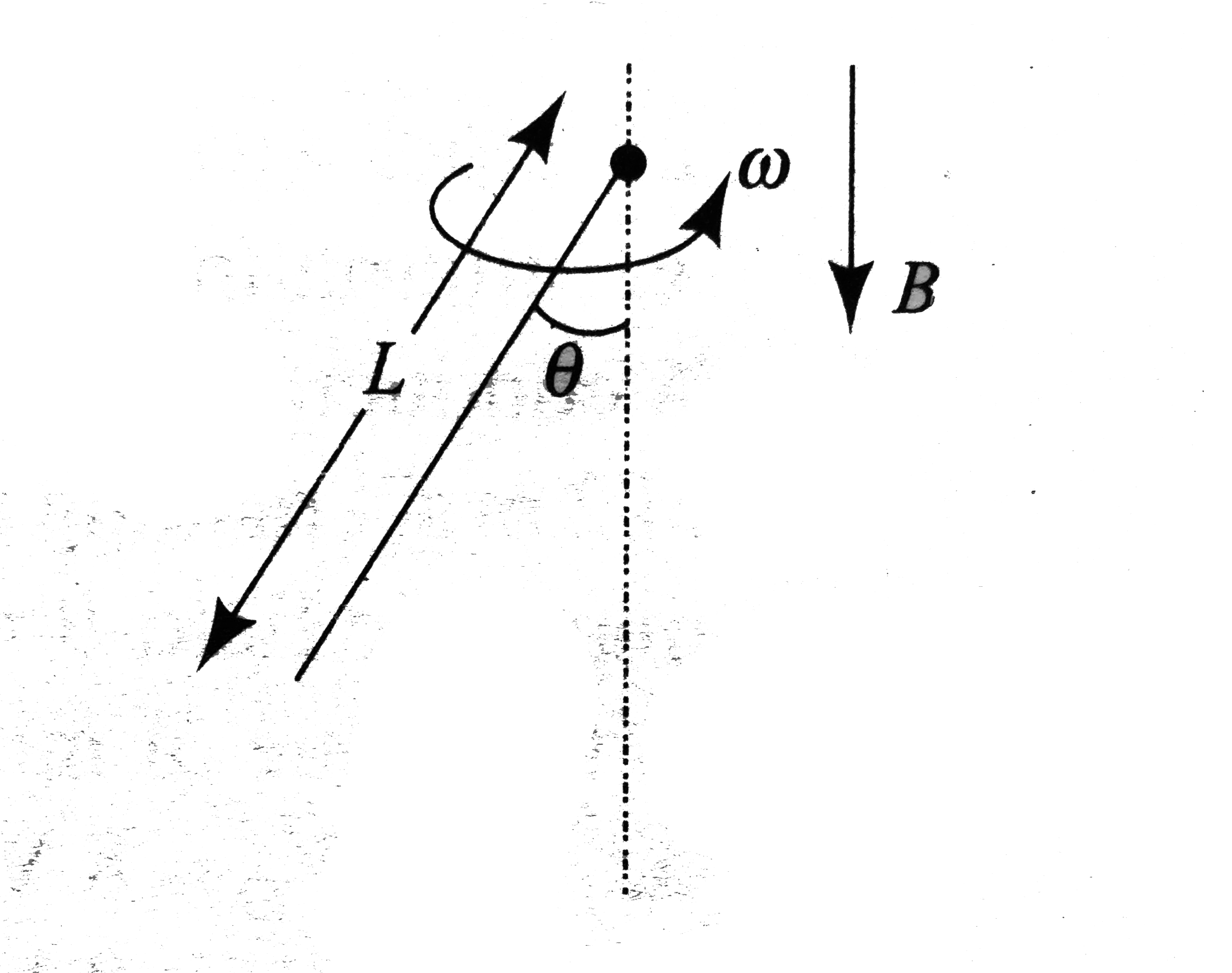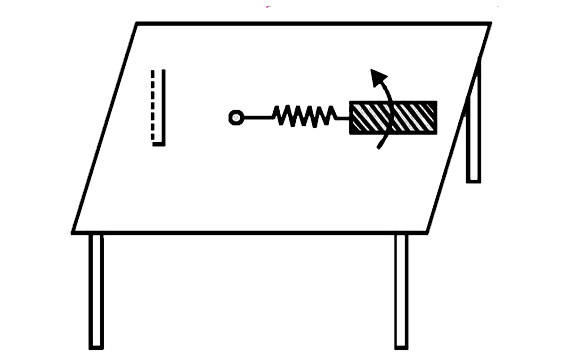A rod of length L, along east-west direction is dropped from a height H. If B be the magnetic field due to Earth at that place and angle of dip is θ, then the magnitude of the induced e.m.f. across two ends of the rod when the rod reachs the Earth is
BLHcosθ
BLcosθ×(2gH)1/2
BLcosθ/(2gH)1/2
None of the above
The correct Answer is:B
To find the magnitude of the induced e.m.f. across the ends of the rod when it reaches the Earth, we can follow these steps:
Step 1: Understand the scenario
A rod of length L is dropped from a height H in a magnetic field B with an angle of dip θ. The rod is oriented along the east-west direction.
Hint: Visualize the rod falling and the magnetic field lines acting on it.
Step 2: Determine the final velocity of the rod
When the rod is dropped from height H, it will fall under the influence of gravity. The final velocity v of the rod just before it reaches the ground can be calculated using the equation of motion:
v=√2gH
where g is the acceleration due to gravity.
Hint: Use the equation of motion that relates initial velocity, final velocity, acceleration, and distance.
Step 3: Find the horizontal component of the magnetic field
The magnetic field B has a component in the direction of the rod's motion. Since the angle of dip is θ, the horizontal component of the magnetic field Bh is given by:
Bh=Bcosθ
Hint: Remember that the angle of dip affects the orientation of the magnetic field.
Step 4: Calculate the induced e.m.f.
The induced e.m.f. E across the ends of the rod can be calculated using the formula:
E=Bh⋅L⋅v
Substituting the values we have:
E=(Bcosθ)⋅L⋅√2gH
Hint: The induced e.m.f. is proportional to the length of the rod, the magnetic field component, and the velocity of the rod.
Step 5: Final expression for induced e.m.f.
Thus, the magnitude of the induced e.m.f. across the two ends of the rod when it reaches the Earth is:
E=BLcosθ√2gH
Hint: Ensure to keep track of the units and the physical significance of each term in the equation.
Conclusion
The final answer is:
E=BLcosθ√2gH
A rod of length L is dropped from a height H in a magnetic field B with an angle of dip θ. The rod is oriented along the east-west direction.
When the rod is dropped from height H, it will fall under the influence of gravity. The final velocity v of the rod just before it reaches the ground can be calculated using the equation of motion:
v=√2gH
where g is the acceleration due to gravity.
The magnetic field B has a component in the direction of the rod's motion. Since the angle of dip is θ, the horizontal component of the magnetic field Bh is given by:
Bh=Bcosθ
The induced e.m.f. E across the ends of the rod can be calculated using the formula:
E=Bh⋅L⋅v
Substituting the values we have:
E=(Bcosθ)⋅L⋅√2gH
Thus, the magnitude of the induced e.m.f. across the two ends of the rod when it reaches the Earth is:
E=BLcosθ√2gH
The final answer is:
E=BLcosθ√2gH
Similar Questions
A conducting rod held horizontally along East-West direction is dropped from rest at certain height near Earth’s surface. Why should there be an induced e.m.f. across the ends of the rod? Draw a graph showing the variation of e.m.f. as a function of time from the instant it begins to fall.
View SolutionThe horizontal component of the earth's magnetic field at a place is BH and angle of dip is 60∘ What is the value of vertical component of earth's magnetic field at equator?
View Solution
Knowledge Check
A vertical rod of length l is moved with constant velocity v towards east. The vertical component of earth magnetic field is B and angle of dip is θ. The induced e.m.f. in the rod is
ABlvsinθBBlvtanθCBlvcotθDBlvcosθA conducting rod of length l falls verticaly under gravity in a region of uniform magnetic field B. The field vectors are inclined at an angle θ with the horizontal as shown in figure. If the instantaneous velocity of the rod is v, the induced emf in the rod ab is
 ABlvBBlvcosθCBlvsinθDzero
ABlvBBlvcosθCBlvsinθDzeroA rod of length L rotates in the form of a conical pendulum with an Angular velocity ω about its axis as shown in Fig. 3.165. The rod makes an angle θ with the axis. The magnitude of the motional emf developed across the two emf of the rod is
 A(a) 12BωL2B(b) 12BωL2tan2θC( c) 12BωL2cos2θD(d) 12BωL2sin2θ
A(a) 12BωL2B(b) 12BωL2tan2θC( c) 12BωL2cos2θD(d) 12BωL2sin2θ
(a) A metal rod of length L rotates about an end with a uniform angular velocity ω . A uniform magnetic field B exists in the direction of the axis of rotation. Calculate the emf induced between the ends of the rod. Neglect the centripetal force acting on the free electrons as they move in circular paths.
(b) A rod of length L rotates with a small but uniform angular velocity ω about its perpendicular bisector. A uniform magnetic field B exists parallel to the axis of rotation. Find the potential difference (i) between the centre of rod and one end and (ii) between the two ends of the rod.
View SolutionA metallic rod held horizontally along east west direction is allowed to fill under gravity. Wil there be an e.m.f induced acroos its ends ?
View SolutionThe magnitude of the earth's magnetic field at a place is B0 and angle of dip is δ. A horizontal conductor of lenth/lying along the magnetic north-south moves eastwards with a velocity v. The emf induced acroos the coductor is
View SolutionA metallic rod of length 'l' is tied to a string of length 2l and made to rotate with angular speed w on a horizontal table with one end of the string fixed. If there is a vertical magnetic field 'B' in the region, the e.m.f. Induced across the ends of the rod is

View SolutionA copper rod of length l is rotated about one end perpendicular to the uniform magnetic field B with constant angular velocity ω . The induced e.m.f. between its two ends is
View Solution